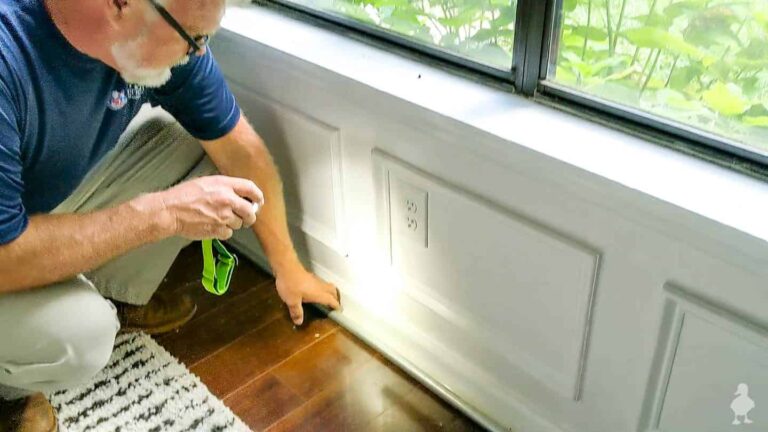So you’ve found what might be your dream home in Australia? Congrats!
But before you sign on that dotted line, there’s something that might not be on your radar but absolutely should be – termites.
These tiny critters can cause massive headaches and even bigger repair bills if you don’t check for them before buying.
Trust me, I’ve seen too many excited homebuyers turn into stressed-out homeowners because they skipped this crucial step.
Let me walk you through the 10 things you need to know about termite inspections before you commit to that Australian dream home.
10 Key Steps Before Purchasing Your Dream Home In Australia
Termites might be small, but the damage they cause in Australia tops $1.5 billion annually. That’s not a typo – billion with a B. With over 300 termite species calling Australia home, and many regions being high-risk zones, getting a proper termite inspection isn’t just smart – it’s essential.
These 10 steps will help you navigate the process like a pro and potentially save you from buying a home that’s secretly being eaten from the inside out.
Understand the Risk of Termite Infestation in Australia
Australia isn’t just famous for beaches and kangaroos – it’s also termite central. Most of the country’s populated areas fall into what experts call “high risk” zones for termite activity.
The northern parts are especially prone because termites love the warm, humid climate. Think about it – Brisbane, Sydney, Perth – all prime termite territory.
The scary part? Many Australian homes are built using materials termites consider an all-you-can-eat buffet. Timber frames, wooden floors, even some types of insulation can attract these hungry pests.
What makes termites extra sneaky is they work in silence. They don’t announce their presence with noises or obvious signs. They just quietly munch away inside your walls, sometimes for years, before anyone notices.
This isn’t meant to freak you out, but knowing the risk level of the specific area where you’re house-hunting is step one. Ask your real estate agent about the termite history in the neighborhood. Local councils often have maps showing termite pressure zones. Taking five minutes to check could save you thousands down the road.
Learn the Signs of Termite Damage
Before you even call in the professionals, knowing what to look for can help you spot potential red flags during house viewings. Termites leave behind clues if you know what you’re searching for.
First up, tap on timber surfaces around the house. Does it sound hollow? That could be termites having an all-you-can-eat buffet inside. Check for tiny holes in wood surfaces – they’re about the size of a pinhead.
Look for what pros call “mud tubes” – these are little tunnels made of dirt that termites build to travel between their nest and food source. They often appear on foundation walls or where the house meets the ground.
Doors or windows suddenly getting stuck? That might not just be the house “settling” – it could be termite damage warping the frames.
Keep an eye out for paint that’s bubbling or peeling in weird spots. When termites munch on wood, they bring moisture with them, which can make paint separate from the wall.
During house inspections, don’t be shy about getting down low and looking in dark corners with a flashlight. Pay special attention to areas where wood touches soil, like deck posts or fence lines.
If you spot any of these warning signs, don’t panic – but definitely get a proper inspection before moving forward. Sometimes what looks like termite damage is something else entirely, and sometimes what looks fine is hiding a major infestation.
Hire a Licensed and Insured Pest Inspector
This is not the time to cut corners or accept your uncle’s offer to “have a quick look” because he once had termites at his place. You need a proper, qualified pest inspector who knows exactly what they’re doing.
In Australia, pest inspectors need specific licenses and qualifications. Make sure whoever you hire has a timber pest inspection license and current insurance. Ask them about their qualifications and how long they’ve been inspecting homes.
A good inspector will use specialized equipment – not just their eyes. They might bring moisture meters, thermal imaging cameras, and even microwave technology to detect termite activity inside walls without having to knock holes in them.
When you’re wondering how much a pre-purchase termite check costs, expect to pay between $200-$500 depending on the property size and location. I know it feels like just another expense in the already expensive process of buying a home, but this is money well spent.
Think about it this way: spending a few hundred now could save you tens of thousands in repairs later. Plus, if termites are found, you can use this information to negotiate the price down or ask the current owners to fix the problem before you buy.
Don’t just go with the cheapest option or the inspector recommended by the selling agent. Do your homework and find someone independent who works for you, not the seller.
Review the Property’s History of Pest Control
Detective work time! Try to get your hands on any records of previous termite treatments or inspections for the property. Good sellers will have these documents ready, but if they don’t, it’s absolutely worth asking.
What you want to see is a consistent history of termite protection. Has the home been regularly inspected? Have there been treatments done? If yes, what kind? Chemical barriers need renewal every few years, while physical barriers might last longer.
Pay close attention to any past infestations. If the house has had termites before, it might be more likely to get them again. This doesn’t mean you shouldn’t buy the house – but you should know what you’re getting into.
Ask about the current termite protection system, if any. Some homes have baiting stations around the perimeter, others have chemical soil treatments, and newer homes might have physical barriers installed during construction.
Be extra careful if the records show multiple termite problems or if there are big gaps in the inspection history. A house that hasn’t been checked in ten years is a bigger risk than one that gets annual inspections.
Don’t be afraid to ask the current owners direct questions about termites. Most people are honest, and you might learn things that aren’t in the official records.
Schedule a Comprehensive Termite Inspection
When it’s time for the actual inspection, make sure it’s the whole-house deal, not just a quick once-over. A proper inspection should take at least 1-2 hours for an average home.
The inspector should check every accessible area – inside, outside, under the house, in the roof space. They’ll look at all timber elements, check the soil around the foundation, examine joins between different building materials, and inspect any retaining walls or fences.
Try to be present during the inspection if possible. Good inspectors will point things out as they go and explain what they’re seeing. This is your chance to learn about your potential new home.
Make sure the inspection includes the garden too – termites often set up shop in tree stumps, woodpiles, or garden sleepers before moving to the main house.
Weather matters for inspections. They’re best done on dry days when there hasn’t been heavy rain recently. Rain can make termites less active and harder to detect.
Remember that some areas might be noted as “inaccessible” in the report. This is normal – inspectors can’t see through solid walls or move heavy furniture. But know that these areas represent some level of unknown risk.
Request a Timber Pest Inspection Report
After the inspection, you should get a detailed written report. Don’t accept just a verbal “all clear” – you need documentation, especially for your lender and insurance company.
A good report will include clear photos of any damage or risk areas, detailed descriptions of what was found, and specific recommendations. It should be written in plain language you can understand, not just technical jargon.
The report won’t just cover termites – it should also mention other wood-destroying pests like borers and fungi. These can cause different types of damage but are equally important to know about.
Take time to read the entire report, not just the summary. The devil’s in the details, and sometimes important information is buried in the middle.
If anything in the report is unclear, call the inspector and ask questions. A good inspector will be happy to explain their findings and what they mean for you as a potential buyer.
Keep this report forever if you buy the house. It becomes part of your home’s history and will be useful for future reference, insurance claims, or when you eventually sell.
Evaluate the Severity of the Termite Risk
Not all termite issues are created equal. Once you have the report, you need to understand what you’re dealing with – is it a dealbreaker or a manageable problem?
Active infestations need immediate attention. If live termites are found in the house, you’ll need to decide if you still want to proceed with the purchase. Sometimes the fix is straightforward, other times it’s complex and expensive.
Structural damage is the biggest concern. If termites have damaged load-bearing elements like support beams or wall frames, repairs can get costly and complicated very quickly.
Evidence of previous termite activity without current termites is less concerning, especially if it’s been properly treated. But you’ll want to know the extent of any damage and if repairs were done correctly.
High-risk conditions without actual termites – like wood touching soil or poor drainage around the foundation – are the easiest to deal with. These are prevention opportunities rather than active problems.
Talk to your inspector about the long-term risk factors for the property. Some homes are just more vulnerable because of their design, materials, or location. Knowing this helps you plan for ongoing protection.
Don’t let emotion cloud your judgment here. It’s easy to ignore termite issues when you’ve fallen in love with a house, but that’s a recipe for future headaches.
Get a Cost Estimate for Treatment and Repairs
If the inspection turns up problems, your next step is figuring out what it’ll cost to fix them. This is crucial information for negotiating the purchase price.
For active infestations, get quotes for both treatment (killing the termites) and repairs (fixing the damage they’ve caused). These are two separate issues with separate costs.
Minor damage might be a simple DIY fix or a small carpenter job. Major structural damage might require engineers, builders, and council permits – all adding to the cost.
Don’t forget to factor in preventative treatments. Even if there are no active termites now, you might want to install a chemical barrier or baiting system to protect your investment.
Get multiple quotes if possible. Prices can vary widely between pest control companies, and some might recommend more extensive (and expensive) treatments than others.
Consider asking the current owners to handle the treatment before you buy. This can be part of your negotiation strategy – they fix the termite issues, or you offer a lower price to account for the work needed.
Keep in mind that some banks won’t approve loans for homes with active termite infestations until they’re treated. Your mortgage broker can advise you on this if it becomes an issue.
Consider Pre-Purchase Pest and Building Package Deals
Smart shoppers combine termite inspections with general building inspections. Many companies offer package deals that can save you money and give you a more complete picture of the property.
A combined inspection looks at both structural issues and pest problems, giving you a comprehensive understanding of the property’s condition. The inspectors often work together and can spot issues that might be missed by looking at just one aspect.
These package deals usually cost less than booking separate inspections. You might pay around $600-$800 for a combined service instead of $400-$500 for each individual inspection.
Building and pest issues are often connected. Poor drainage might be noted in a building report, but it’s also a termite risk factor. Having both perspectives helps you understand the full implications.
Some companies offer additional services like checking for asbestos or testing for methamphetamine residue. Depending on the age and history of the property, these might be worth considering.
The reports from these combined inspections give you powerful negotiating tools. If multiple issues are found, you have solid grounds for requesting repairs or price reductions.
Remember that different inspectors have different specialties. Make sure any package deal includes properly qualified people for each aspect – a building inspector might not be a termite expert and vice versa.
Plan for Future Termite Prevention Post-Purchase
If you decide to buy the home, your termite journey isn’t over – it’s just beginning. Protecting your new investment should be part of your homeownership plan from day one.
Create a termite management plan based on the inspector’s recommendations. This might include installing a chemical barrier, setting up a baiting system, or making changes to the house and garden to reduce termite attraction.
Schedule regular professional inspections – annually is standard in high-risk areas. Mark these in your calendar just like you would service dates for your car or air conditioner.
Consider taking a proactive approach by removing termite attractions around your property. This includes keeping woodpiles away from the house, fixing leaky pipes promptly, and ensuring good drainage around the foundation.
Learn what termite activity looks like so you can spot early warning signs. The sooner you catch a problem, the easier and cheaper it is to fix.
Keep records of all treatments, inspections, and warranties. These will be valuable when you eventually sell the house, and some insurance policies require proof of regular termite management.
Budget for termite protection as an ongoing expense. Just like you set aside money for home maintenance, include termite management in your annual housing costs.
Remember that preventing termites is always cheaper than dealing with an established infestation. A little investment in prevention can save you from major repair bills down the road.
By following these ten steps, you’ll be well-equipped to handle the termite aspect of buying a home in Australia. It might seem like a lot of work now, but it’s nothing compared to the headache of discovering termites after you’ve moved in. Happy house hunting, and may your dream home be termite-free!
Conclusion
Buying a home is exciting, but termites can quickly turn your dream home into a nightmare if you’re not careful. The good news is that with these 10 steps, you’re now equipped to handle the termite inspection process like a pro.
Remember, finding evidence of termites during an inspection isn’t necessarily reason to panic or walk away from a property you love. It’s information that helps you make an informed decision and potentially gives you leverage in negotiations.
The key is knowing exactly what you’re buying – both the good and the bad. A thorough termite inspection gives you that knowledge and the confidence to move forward with one of the biggest purchases of your life.
I’ve seen countless homebuyers skip proper termite inspections to save a few hundred dollars, only to face repair bills in the thousands later. Don’t be one of them! Take these steps seriously, and you’ll be enjoying your new Australian home with peace of mind for years to come.



